In a previous article, I briefly discussed why analog photography is seeing somewhat of a resurgence among the younger crowd. The allure of analog photography may be due to both the aesthetics of the resulting images, as well as the anticipation (or excitement!) of not knowing how your images will turn out.
After some deliberation, I decided to take the plunge, and got myself an instant camera, which allows me to reap the benefit of the film-like aesthetics, but without the need to wait for the film to be processed. Indeed, there were other deciding factors as well, which I will cover in this article.
I should mention though, that Fujifilm do have a couple of hybrid instant cameras (such as the Instax Mini Evo), which are really digital cameras with built-in printers. I wanted a fully-analog camera, hence my decision not to consider the hybrid options.
Do note that this is a “first impressions” opinion piece (and definitely not a product review) as I have only had this camera for little over a week, so your mileage and experience may vary.
A Look at the Camera: Fujifilm Instax Mini 90 Neo Classic
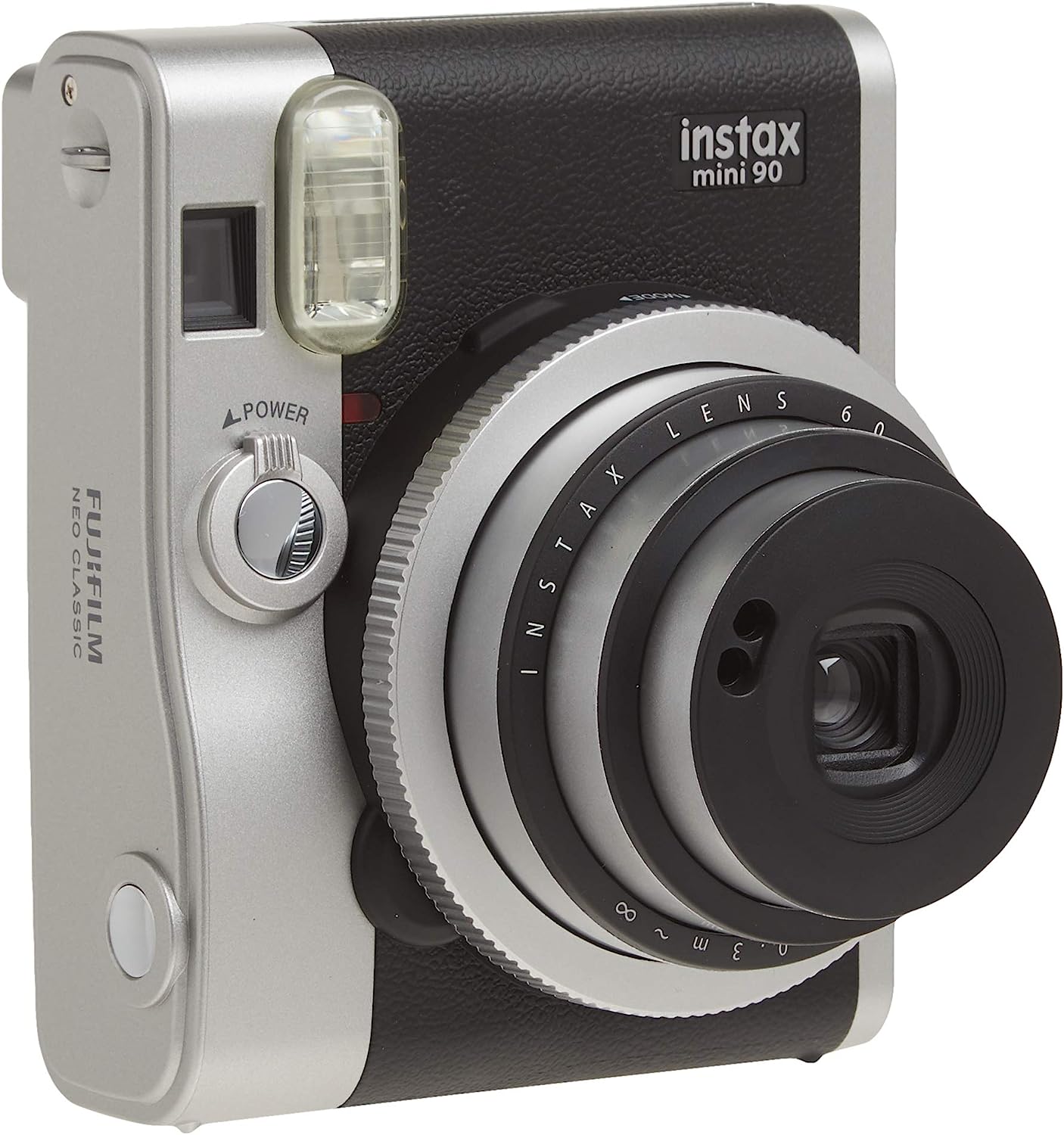
The Instax Mini 90 is the more advanced of Fujifilm’s lineup of instant cameras, offering a range of controls not found on the other Instax cameras. These controls will certainly appeal to more experienced photographers looking for more than the run-of-the-mill fully-automatic camera. It is also a nice looking camera – the model I bought is the same as pictured above – black leatherette on silver – a nice match for my silver X-T5 (see my gear page). As evident from their marketing material, the camera was “designed with a classic look” which for me was a key factor in picking up this camera – I think Fujifilm designed this camera for more “serious” photographers. For me personally (and definitely with no intention to offend anyone!) I won’t be caught dead using the other Instax cameras (they look like toys!).
As you can see in the Parts Diagram below (more information about the camera here), there are a number of modes and options accessible via the back panel. Most notably, the flash can be turned off completely (yay!), a feature that is absent from the other Instax camera models. It is also possible to apply some form of exposure compensation via the brightness control. At least for my first week out with the camera, I found these two options to be more applicable to my use case.

Does Size Matter?
Instax films currently come in three different sizes – Mini, Square and Wide. My preference, however, is the wider and larger format that is the Instax Wide.
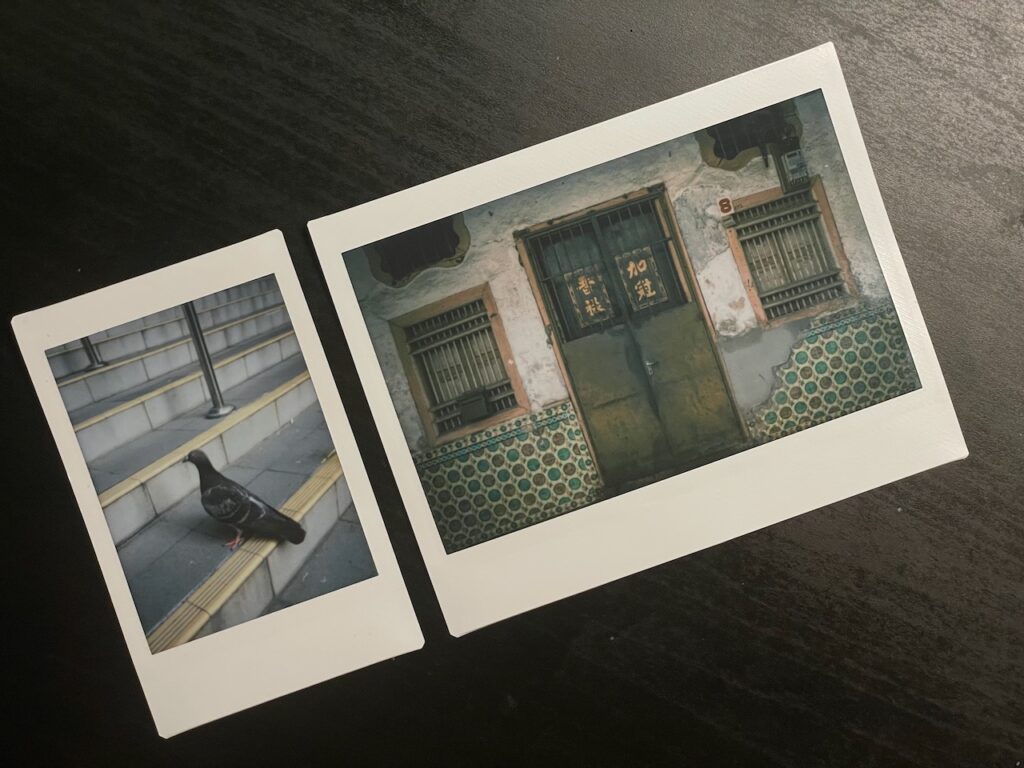
As you can see above, the Wide film is nearly double the size of the Mini. As I wanted an analog camera with more flexible controls and the option to turn off the flash, that essentially disqualified the Instax Wide 300 as my camera of choice. Not only would the Instax Wide 300 put me squarely (no pun intended here) in the passenger seat with its near fully-automatic controls, it is also a substantially bulkier camera due to both the need to house the larger Wide film cartridges as well as the lens housing required to project a larger image circle onto the wider film format.
I prefer my cameras to be as compact as practically possible in order to help me better blend into crowds. If size is not an concern, and you still prefer a camera for the Wide format that allows for better controls, Lomography has some good cameras in their lineup.
What about Costs?
A pack of (for 10 exposures) Instax Mini film costs about $13.00 in Singapore, but can be had for less if you choose to buy it in bulk online. That is to say, the costs can quickly add up over time. One deciding factor in going with instant film photography is the rising cost of 35mm roll film. It is also necessary to consider a few other related factors such as the costs to develop and scan roll film as well as the logistics and inherent turnaround times involved in sending in your film for processing. Using instant film means (for me at least) I get to see my developed pictures after a couple of minutes, saving myself the time and hassle of making a trip down to the photo lab.
I don’t have much else to say about the costs of film (be it instant or roll film) photography in general. In my view, if you love photography, whether it be digital or analog, costs should be a secondary consideration and not a primary deciding factor.
Sample Photos
The below are some pictures taken during a short outing to Chinatown in Singapore. These were digitised with the Instax UP! app.

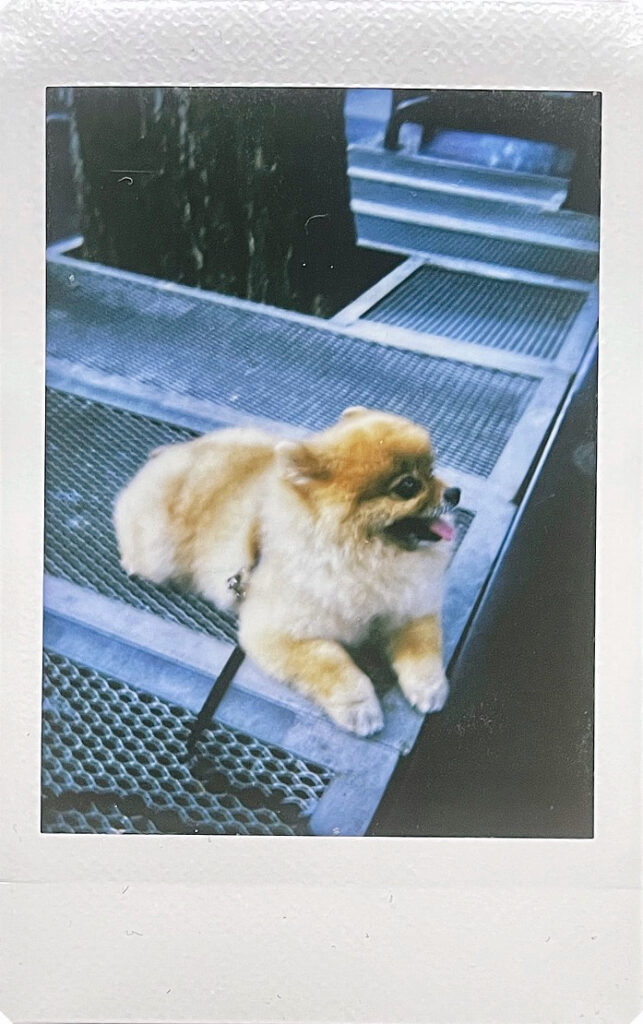
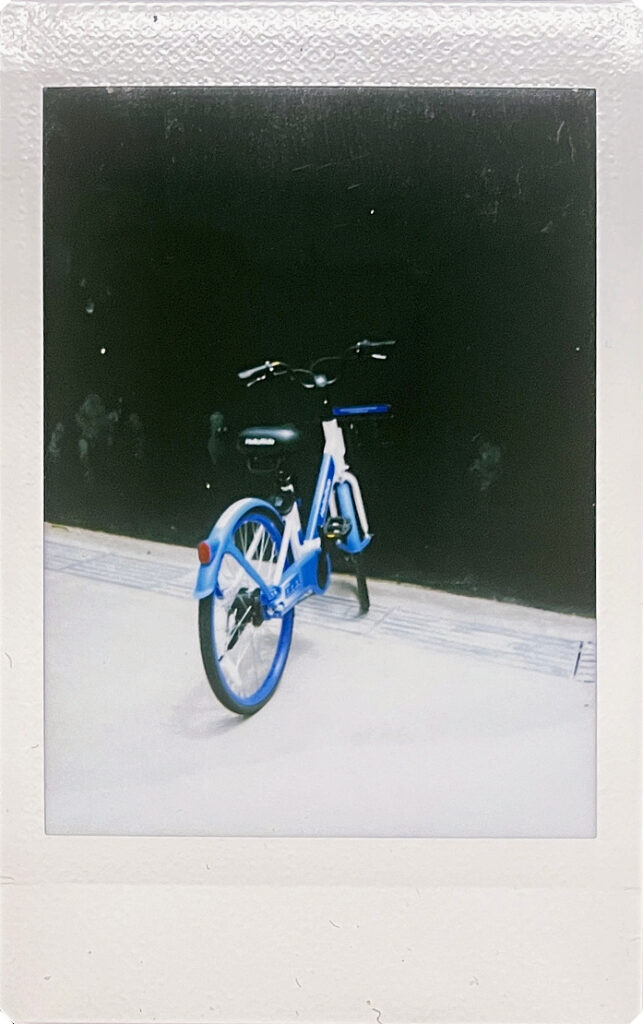
It is also possible to shoot in landscape/horizontal orientation.

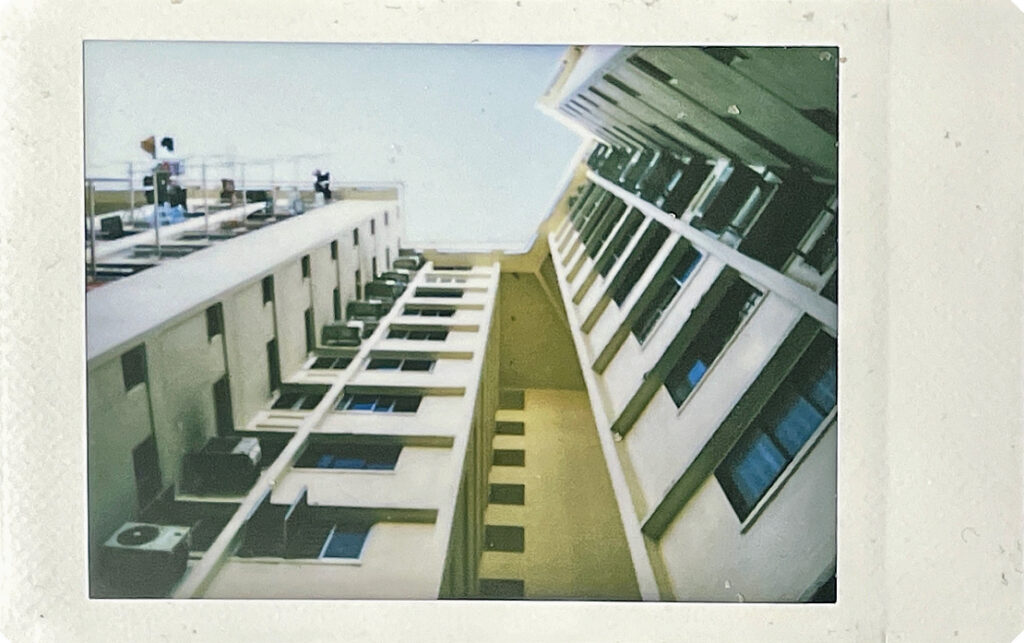
The Shooting Experience
The camera has a lightweight construction that does not feel overly cheap. The lens is made from optical grade polycarbonate (i.e., plastic) that gets the job done.
To put it another way as succinctly as possible, this is a simple camera, but one that is not necessarily simple to use as you may (as I did) need to get used to the inherent limitations of the camera and the medium.
There is no autofocus. You get a fixed focus (with the option to enable macro or landscape mode via a rear panel control button) 60mm f/12.7 lens. To use the camera effectively, you need some way to gauge the distance between the subject and the camera – “macro” mode allows you to take subjects that are between 0.3 to 0.6 meters from the camera. “Normal” mode enable you to take photos from 0.6 to 3.0 meters. And finally, “landscape” mode is for anything from 3.0 meters to infinity. For me at least, this means some fiddling and faffing around with the controls before each shot is required (the controls are “reset” every time the camera is switched back on), showing me down substantially which can be either a good or bad thing.
Image Characteristics
The images are characteristic of Fujifilm’s impeccable colour science. I found the images to be slightly (as expected) on the cooler side. However the dynamic range (or lack thereof) is something you may want to pay attention to. I don’t think this is a weakness per se, but something to be aware of when working with the camera and medium.

The picture of the bicycle against the wall was shot in “normal” focus mode (for subjects between 0.6 and 3.0 meters from the camera) and exposure compensation was set to “darken” with the knowledge (based on my research up to that point) that under certain daylight conditions, the images may come out slightly overexposed. It may be a bit difficult to make out the shape and outlines of the bicycle handlebar and saddle against the wall.
The wall was actually grey – not black like shown in this picture. The ground is very nearly blown out.
My observation thus far is that under certain high-contrast lighting conditions, the highlights may get blown out and the shadows and darker colour regions may get crushed, as you can see in this example.

The image of the pigeon on the stairs as taken in “macro” mode, roughly about half a metre from the camera.
With subjects like these (my subject was obviously in no mood to pose for pictures!), it was a race against time to program the camera to “macro” mode as well as to turn off the flash. It was also a split decision to shoot this picture in portrait orientation.
The added pressure of knowing that releasing the shutter at the wrong time would result in wasted film added to the suspense of taking the photo, which depending on who you ask, might be absolutely thrilling or downright stressful!
The softer lighting and more even tones (greyish bird against somewhat greyish stairs) gave way to a more balanced exposure.
Closing Words
In the short time I spent with this camera, I had loads of fun. Shooting with film means that each shot is the product of more careful deliberation – forcing me to slow down and think, and to decide whether or not a picture is worth taking.
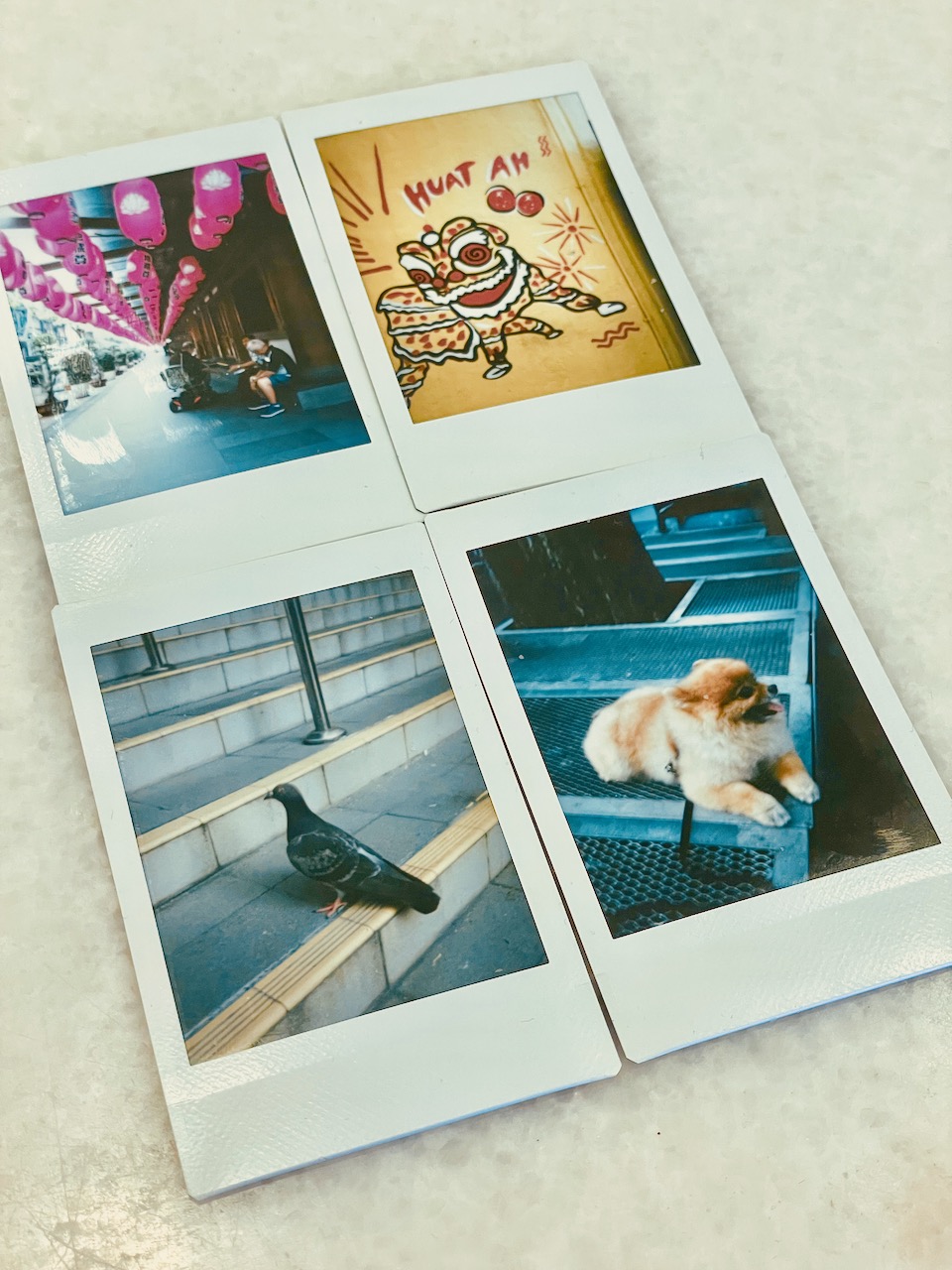
There are limitations inherent in the medium, but as aforementioned, I do not think these are weaknesses. Rather, it makes better sense to work within the limitations imposed as it helps us to be better photographers in the longer run. The typical run-and-gun style made possible with digital photography means there is no shortage of images proliferating over the internet and the various social media platforms that are very much “recycled” and lacking in uniqueness and character.
For me, instant photography is about making a statement, telling a story, with every thoughtful release of the shutter, carving out onto film a moment in time and a memory that will surely be a great conversation starter at the dinner table.
